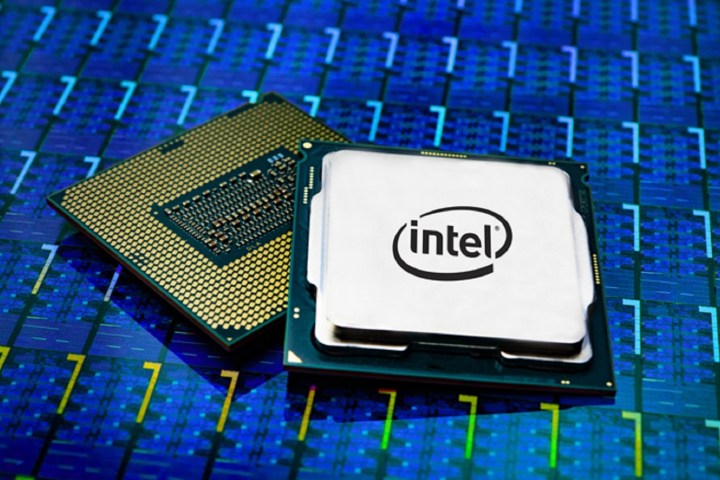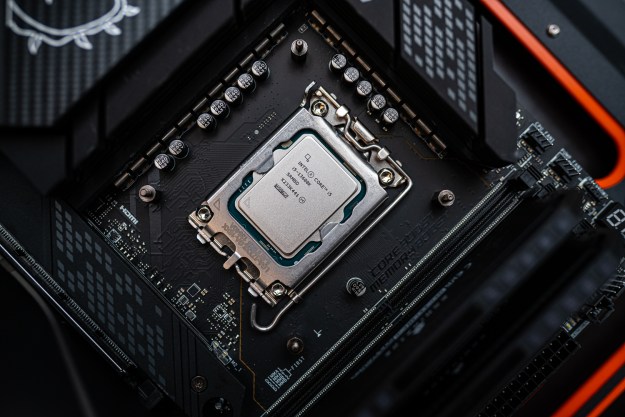
AMD stole the CPU spotlight in 2019 with its new-generation of Ryzen 3000 processors, and Intel isn’t taking it lying down. Alongside its competitive 10nm Ice Lake and 14nm Comet Lake mobile CPUs, it also refreshed its high-end desktop (HEDT) CPUs in the form of the 10th-generation Cascade Lake X range, in late-2019. That extended to its Xeon server processors a short while later, with a major focus on cost-cutting to better compete with AMD’s Threadripper 3000 and Epyc server CPUs.
Here’s everything you need to know about Cascade Lake processors.
Release date and pricing
Intel’s first range of Cascade Lake CPUs debuted in November 2019 and refreshed its range of HEDT processors. It was a smaller lineup than in previous ninth and seventh generations, but we did see new 10, 12, 14, and 18-core chips, named the Core i9-10900X, Core i9-10920X, Core i9-10940X, and Core i9- 10980XE, respectively.
Specifications didn’t change dramatically from their predecessors, but their prices did. Launching at close to half that of their last-generation counterparts, those same 10, 12, 14, and 18 core CPUs were priced at $590, $689, $784, and $979, respectively. Those prices remain consistent in early 2020, although stock is very hard to come by, even among major retailers.
This kind of price slashing extended to the Cascade Lake AP range (Xeon server processors) in February 2020, with Intel reducing costs by as much as 60% in some cases. Dropping cost per core has been the main focus of the Cascade Lake CPUs.
Performance
Intel CPU performance in general hasn’t made any major leaps in recent years, due to being stuck on the 14nm process node. That has been a problem that is repeated in the HEDT range too, with the ninth generation barely improving upon the seventh, and now the 10th barely improving on the ninth. There are some performance improvements. They’re just not that dramatic.
| Cores/Threads | Base clock | Single-core / All core boost clock | TDP | |
| Core i9-10900X | 10/20 | 3.7GHz | 4.7GHz/4.3GHz | 165W |
| Core i9-10920X | 12/24 | 3.5GHz | 4.8GHz/4.3GHz | 165W |
| Core i9-10940X | 14/28 | 3.3GHz | 4.8GHz/4.1GHz | 165W |
| Core i9-10980XE | 18/36 | 3.0GHz | 4.8GHz/3.8GHz | 165W |
The only real changes from the last generation are in clock speed and memory support. Where Cascade Lake X CPUs support memory up to 2,933MHz out of the box, their last-generation counterparts could only officially support 2,666MHz. There are also some modest clock speed improvements, with the mid-range offerings having slightly higher base and boost clocks, and the top-tier 10980XE only improving upon its single-core boost clock.
There is a slight bump in the number of supported PCI-Express lanes, from 44 to 48, which is an important specification when it comes to competing with AMD’s Threadripper CPUs, which support up to 88 PCIe lanes. Such a modest improvement doesn’t lead to much in the way of real-world advantage, however, especially considering the competition.
With these extremely modest improvements, it’s perhaps no surprise that the Cascade Lake X CPUs did not receive positive reviews. The top-tier 10980XE barely managed a passing grade at Toms Hardware, thanks to its overclockability and backwards compatibility, but received a drumming for its incremental performance enhancements and dead-end status for the platform. Especially when compared to the massive performance improvements seen in AMD’s mainstream Zen 2 CPUs. The 16-core 3950X, in particular, is competitive in most multi-threaded tests with even the 18-core 10980XE.
PCWorld was more complimentary but highlighted how Cascade Lake HEDT chips still lose out to AMD on the value front, even with a massive cost cut. That only became more apparent when the third-generation Threadripper CPUs showed up in the months following the release of these Cascade Lake CPUs.
These are the fastest CPUs Intel has ever released in the HEDT space, but they’re massively outgunned by the competition, and don’t offer anything to really warrant the upgrade for those with existing Intel enthusiast CPUs.
Architecture
The architecture at the core of the new CPUs is new, but it’s more of a refinement than a revolution. It’s based on a 14nm++ node, so it’s still 14nm, but a little more enhanced than the 14nm CPUs that came before it. That’s why there isn’t much in the way of improvements, even if these are still slightly better than what has come before.
The architectural changes are what freed up some extra PCI-Express lanes though, with new Cascade Lake CPUs offering 48 PCIe 3.0 lanes.
Motherboards
Since Cascade Lake X is still based on the LGA 2066 socket, the whole range is compatible with existing 2066 supporting motherboards, most notably X299 models. That means that upgrading to the new Cascade Lake CPUs is as simple as swapping in the new CPU — and potentially some new, faster memory if you want to take advantage of the new support.
Whether you feel it’s worth it though, is up to you.
Editors' Recommendations
- AMD Zen 5: Everything we know about AMD’s next-gen CPUs
- Do CPUs require drivers?
- The best processors in 2024: AMD and Intel CPUs duke it out
- Intel’s CPUs just got way more confusing
- Confused about Core Ultra? We were too, so we asked Intel about it




